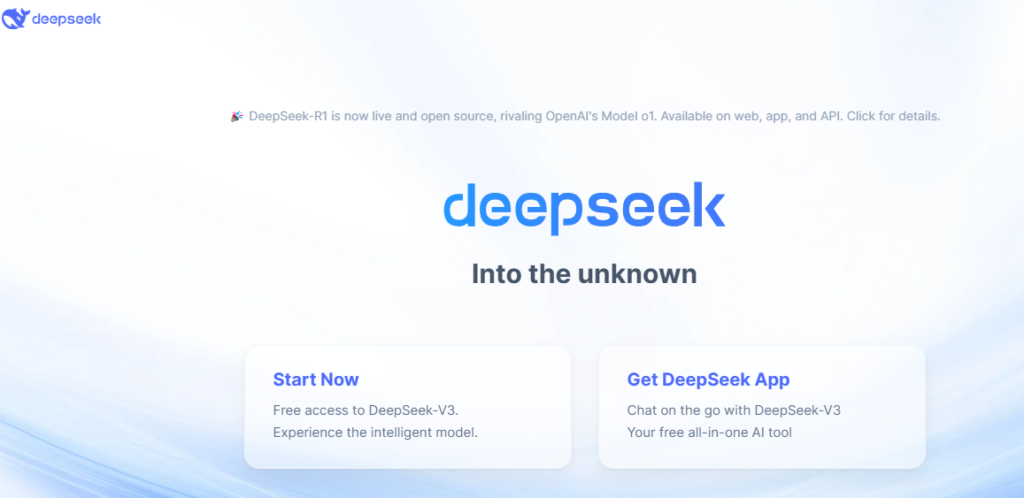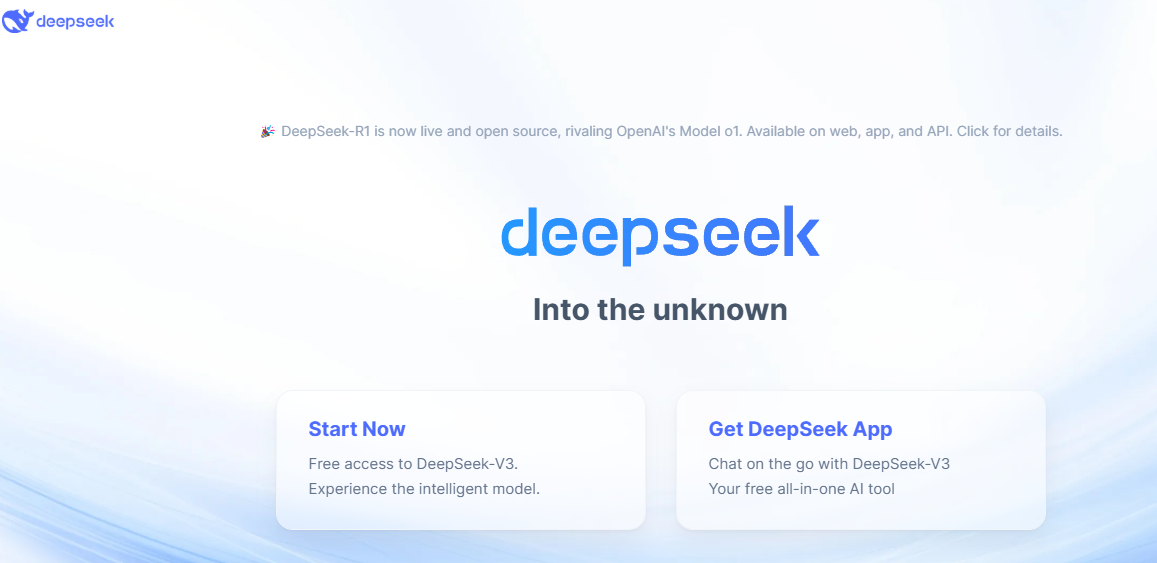
In today’s fast-paced digital world, staying ahead of the curve is crucial. One term that’s been making waves recently is DeepSeek. But what exactly is DeepSeek, and why is it gaining so much attention? Whether you’re a tech enthusiast, a business owner, or simply curious about the latest innovations, this blog will break down everything you need to know about DeepSeek in an easy-to-understand way.
What is DeepSeek?
This is an advanced technology designed to revolutionize the way we interact with data, artificial intelligence (AI), and machine learning (ML). At its core, DeepSeek focuses on deep learning and data analysis, enabling systems to process vast amounts of information quickly and accurately. Think of it as a supercharged tool that helps machines “think” and “learn” like humans, but at an incredibly faster pace.
The term “DeepSeek” combines two key concepts: deep learning (a subset of AI) and seeking (the act of searching or exploring). Together, they represent a technology that dives deep into data to uncover insights, patterns, and solutions that were previously hidden or too complex to detect.
How Does This Work?
DeepSeek leverages neural networks, which are algorithms inspired by the human brain. These networks consist of layers of nodes (or “neurons”) that process data in stages. Here’s a simplified breakdown of how it works:
- Data Input: DeepSeek starts by collecting massive amounts of data from various sources, such as text, images, or sensor data.
- Processing: The data is fed into neural networks, where it’s analyzed layer by layer. Each layer extracts specific features or patterns.
- Learning: Through a process called training, DeepSeek improves its accuracy over time by learning from past mistakes and successes.
- Output: Finally, the system generates actionable insights, predictions, or decisions based on the analyzed data.
This process allows this to perform tasks like image recognition, natural language processing, and predictive analytics with remarkable precision.
Key Applications
Its versatility makes it applicable across a wide range of industries. Here are some of the most exciting use cases:
1. Healthcare
DeepSeek is transforming healthcare by enabling faster and more accurate diagnoses. For example, it can analyze medical images like X-rays or MRIs to detect diseases such as cancer at an early stage. It also helps in drug discovery by predicting how different compounds will interact with the human body.
2. Finance
In the financial sector, it can used for fraud detection, risk assessment, and algorithmic trading. By analyzing transaction patterns, it can identify suspicious activities and prevent financial crimes.
3. Retail
Retailers use this to personalize customer experiences. It analyzes shopping behavior to recommend products, optimize pricing, and manage inventory more efficiently.
4. Autonomous Vehicles
Self-driving cars rely on DeepSeek to process real-time data from sensors and cameras, enabling them to navigate safely and make split-second decisions.
5. Customer Support
This powers chatbots and virtual assistants, allowing them to understand and respond to customer queries in a natural, human-like manner.
Why is DeepSeek Important?
This is more than just a buzzword—it’s a game-changer. Here’s why:
- Speed and Efficiency: It can process and analyze data much faster than traditional methods, saving time and resources.
- Accuracy: By learning from vast datasets, it can minimize errors and deliver highly accurate results.
- Scalability: Whether you’re a small business or a multinational corporation, it can be scaled to meet your needs.
- Innovation: It opens up new possibilities for innovation, from creating smarter AI systems to solving complex global challenges.
Challenges and Limitations.
While DeepSeek offers numerous benefits, it’s not without its challenges:
- Data Privacy: The use of large datasets raises concerns about privacy and security. Ensuring that data is collected and used ethically is crucial.
- Cost: Implementing this technology can be expensive, especially for small businesses.
- Complexity: It requires specialized knowledge and expertise, which can be a barrier for some organizations.
- Bias: If the training data is biased, the results generated by this may also be biased, leading to unfair outcomes.
How to Get Started with DeepSeek
Interested in leveraging this for your business or projects? Here’s how you can get started:
- Identify Your Needs: Determine what problems you want to solve or what goals you want to achieve with DeepSeek.
- Gather Data: Collect high-quality, relevant data to train your DeepSeek models.
- Choose the Right Tools: There are many platforms and frameworks available for deep learning, such as TensorFlow, PyTorch, and Keras.
- Partner with Experts: If you’re new to this AI , consider collaborating with AI specialists or hiring a team with the necessary expertise.
- Test and Iterate: Continuously test your models and refine them based on the results.
The Future of DeepSeek
The future of DeepSeek is incredibly promising. As technology continues to evolve, we can expect even more advanced applications and capabilities. Here are a few trends to watch out for:
- Integration with IoT: it will play a key role in the Internet of Things (IoT), enabling smarter and more connected devices.
- Enhanced Personalization: From healthcare to entertainment, This will deliver hyper-personalized experiences tailored to individual preferences.
- Ethical AI: There will be a greater focus on developing ethical and transparent DeepSeek systems to address concerns around bias and privacy.
- Quantum Computing: The combination of DeepSeek and quantum computing could unlock unprecedented computational power, solving problems that are currently unsolvable.
Conclusion
This is a powerful technology that’s reshaping industries and driving innovation. By harnessing the power of deep learning and data analysis, it offers solutions that are faster, smarter, and more efficient than ever before. Whether you’re a business owner, a tech enthusiast, or simply curious about the future of AI, understanding DeepSeek is essential in today’s digital age.
As with any technology, it’s important to approach with a balance of excitement and caution. By addressing its challenges and leveraging its strengths, we can unlock its full potential and create a better, smarter world.
FAQs
1. What is the difference between DeepSeek and traditional AI?
DeepSeek focuses on deep learning, a subset of AI that uses neural networks to analyze complex data. Traditional AI relies on simpler algorithms and may not be as effective for large-scale or intricate tasks.
2. Is DeepSeek only for large businesses?
No, DeepSeek can be used by businesses of all sizes. However, smaller businesses may need to start with simpler applications due to cost and complexity.
3. How can I learn more about DeepSeek?
There are many online courses, tutorials, and resources available on platforms like Coursera, Udemy, and YouTube. You can also join AI communities and forums to connect with experts.
4. Is this safe to use?
When implemented responsibly, DeepSeek is safe. However, it’s important to address ethical concerns, such as data privacy and bias, to ensure its safe and fair use.

